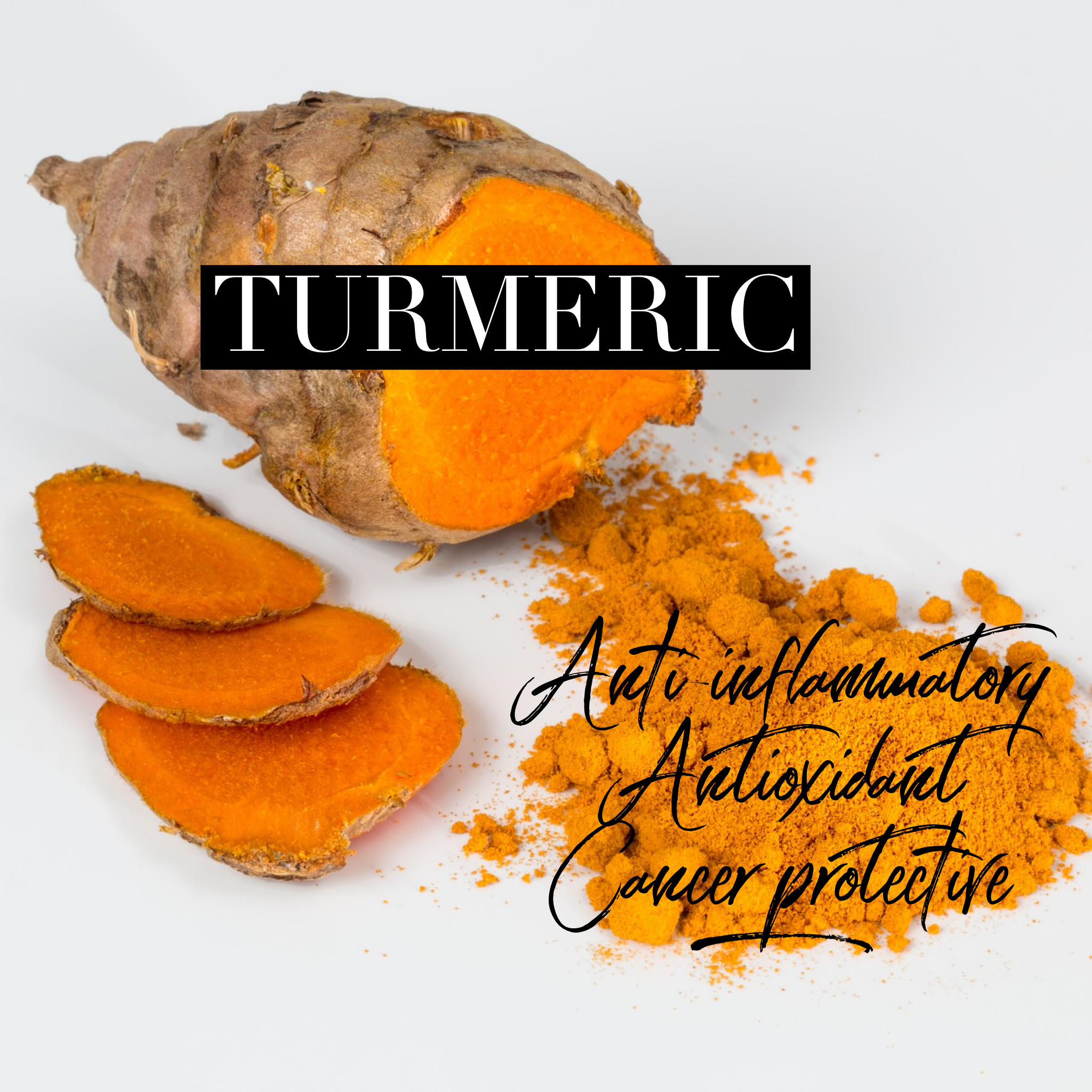
Turmeric has became one of the most popular health-promoting foods and for a very good reason since it can help fight inflammation which is a huge contributing/perpetuating factor in many chronic diseases.
Inflammation is a normal and necessary response in events of injury like fir example when you bump your elbow and the tissues around the injury need repair, when you get a viral infection (i.e. the ‘flu!) or burn yourself. However, when inflammation gets out of control and becomes chronic, it can contribute/become an important factor in conditions like arthritis, endometriosis, or eczema.
Diet (and lifestyle too!) is a great and easy way to keep inflammation under control because certain foods are pro-inflammatory and some others can reduce inflammation, and of course, we are all for including the latter on our daily menu!! Let’s see which is which:
? Pro-inflammatory foods include saturated fats like those in meat and dairy, refined carbs, sugar, alcohol and processed foods like crisps, ready to eat foods, and industrial bakery products.
?Anti-inflammatory foods include fruit and vegetables, oily fish, olive oil, nuts and seeds (especially almonds) as well as spices like turmeric and ginger.
In most cases, we recommend a diet HIGH in anti inflammatory foods to compensate the effects of pro inflammatory foods because we believe all foods (in varying quantities!) can part of a balanced diet and, hand in heart, we couldn’t live without pizza!. In cases of high inflammation (autoimmune conditions, IBD, arthritis, etc) we do recommend a much stricter anti-inflammatory approach to diet to keep flare-ups under control.

Turmeric owes its antioxidant and anti-inflammatory poverties to curcumin, the polyphenol that makes this lovey spice bright yellow.
Curcumin blocks the formation of reactive-oxygen species that promote oxidation and cell damage which in turn contributes to ageing and degenerative diseases and can make detox a more difficult process.
Curcumin can also reduce inflammation via the inhibition of the enzymes involved in this process, which can reduce tumour cell proliferation and suppress carcinogenesis and tumour growth. Research shows that curcumin can protect against cancers of colon, stomach and skin.
The curcumin content in normal doses of turmeric in food is relatively low but when used regularly, it can help modulate the normal inflammatory response and reduce oxidative stress, ie protect agains premature ageing and cell degeneration.
In cases of chronic inflammation like arthritis, endometriosis, PCOS, excess weight, IBD or psoriasis and oxidative stress-linked conditions like ADHD, depression, Alzheimers disease, atherosclerosis, CFS and lichen planus, therapeutic doses may be required which basically means supplements but always recommended in the correct doses and thoroughly checked by a medical or nutrition professional.
Curcumin’s bioavailability, ie how easily we absorb it, is rather low as it is quickly metabolised by the liver.
But there are things we can do to enhance absorption: when cooking with turmeric, it is advisable to add some back pepper as piperine, the compound responsible for the pungent flavour of black pepper, can increase its absorption.
Also, it is a good idea to add some fat (eg cooking olive oil) to whichever meal you are adding turmeric to because curcumin is fat soluble – ie. it needs some fat to be absorbed.

? Add to your smoothies, with orange, carrot and papaya for a sunny start to your day! In smoothies, we use fresh turmeric as it gives them a lovely earthy flavour.
are always a  (b)right hit! These delicious little cakes are packed with antioxidants and are totally balanced with protein and good fats which means the effect of the brown sugar will be rather modest. Additionally they are high in fibre to keep us regular and support optimal detox. The perfect treat!
(b)right hit! These delicious little cakes are packed with antioxidants and are totally balanced with protein and good fats which means the effect of the brown sugar will be rather modest. Additionally they are high in fibre to keep us regular and support optimal detox. The perfect treat!

? Try adding turmeric to your butternut squash soup.
What can I say? One of my favourite lunch-time foods from Autumn to Winter. I love adding red lentils for a good dose of veggie protein plus plenty of good fats to help you absorb the curcumin!
? And why not go a little bit more adventurous and try our lamb biryani or even add 1 tsp to your scrambled eggs for a masala version??
Any questions? Please get tin touch, we’d love to hear from you! Just drop us a line on info@puplecarrotnutrition.co.uk
For a full version of this article including references, please email info@purplecarrotnutrition.co.uk
If you would like to hear about new postings, please join our mailing list.